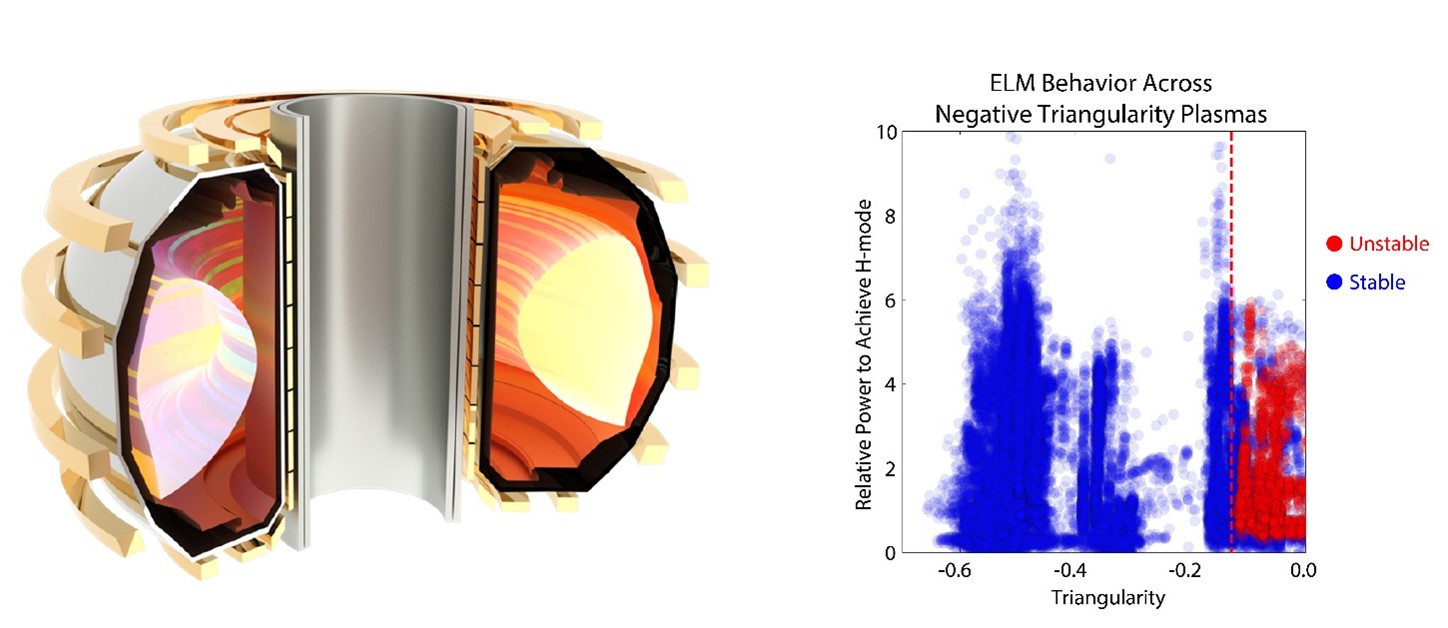Research
To support the program mission and its major focus, the U.S. fusion program is constructed from four elements:
Burning Plasma Science: Foundations
Burning Plasma Science: Long Pulse
Burning Plasma Science: High Power
Discovery Plasma Science
These programs (with the exception of the Burning Plasma Science: High Power which is described in the Facilitiessection) are described below.
Burning Plasma Science: Foundations advances the predictive understanding of plasma confinement, dynamics, and interactions with surrounding materials. Among the activities supported by this subprogram are:
- Research at major experimental facilities is aimed at resolving fundamental advanced tokamak and spherical torus science issues
- Research on small-scale magnetic confinement experiments to elucidate physics principles underlying toroidal confinement and to validate theoretical models and simulation codes
- Theoretical and computational work on the fundamental description of magnetically confined plasmas and the development of advanced simulation codes on current and emerging high-performance computers
- Enabling Research and Development needed to support the continued improvement of the experimental program and facilities
Burning Plasma Science: Long Pulse explores new and unique scientific regimes that can be achieved with long-duration superconducting international machines, and addresses the development of the materials and technologies required to withstand and sustain a burning plasma. This subprogram includes:
- Long Pulse: Tokamak: U.S. research teams are supported to work on the long-pulse international tokamaks that are coming on-line either now or in the near future, and will build on the experience gained from U.S. fusion facilities to conduct long-pulse research on the international tokamaks.
- Long Pulse: Stellarator:The U.S. collaboration on Wendelstein 7-X (W7-X) in Germany provides an opportunity to develop and assess 3D divertor configurations for long-pulse, high-performance stellarators. In this collaboration, the U.S. develops control schemes to maintain plasmas with stable operational boundaries, including the challenges of control with superconducting coils and issues of the diagnosis-control cycle in long-pulse conditions.
- Materials & Fusion Nuclear Science: This element supports the development, characterization, and modeling of structural, plasma-facing, and blanket materials used in the fusion environment. Studies that help identify the various scientific challenges to fusion energy deployment and that determine how to address them in a safe and environmentally responsible manner are a key component.
Discovery Plasma Science supports research that explores the fundamental properties and complex behavior of matter in the plasma state to improve the understanding required to control and manipulate plasmas for a broad range of applications. This subprogram supports a portfolio of research projects and small- and mid-scale experimental user facilities for exploring the diverse frontiers of plasma science. The activities of this subprogram are carried out through inter- and intra-agency partnerships at academic institutions, industry research groups, and national laboratories across the country. The Discovery Plasma Science subprogram is organized into two principal activities:
- Plasma Science Frontiers involve research in largely unexplored areas of plasma science, with a combination of theory, computer modeling, and experimentation; and
- Measurement Innovation supports the development of novel and innovative diagnostic techniques and their application to new, unexplored, or unfamiliar plasma regimes or scenarios.
For further information about any of these programs, please contact the associated FES Program Managers.



